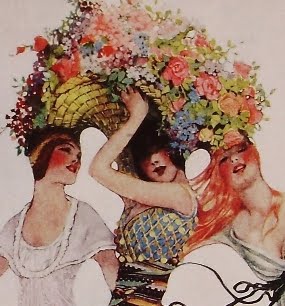I know few who live outside the tyranny of speed. I lament that despite my efforts, I am continually holding myself back from what I would rather do, because I am compelled to drudge through what I "should" do. Speed in all its forms: efficiency, responsibility, performance, financial stability all scream their threats should I consider interrupting work for lunch with a friend, talking too long with a client on personal terms, or going for a mid-day hike. Occasionally I rebel and I am richly rewarded with increased inspiration. As a struggling student myself, I offer these thoughts.
It is not natural to think in terms of speed. This way of thinking
disconnects us from nature and hinders us from connecting with one-another. Nature,
including humans, is inclined to move in terms of rhythm as opposed to measured
beats (I think this is why the ticking clock drives me crazy, and music and
dance energize me). When we move rhythmically, when we think rhythmically, when
we breathe rhythmically, indeed, when we live rhythmically, we flow. Mihaly Csikszentmihalyi, noted for his work in the study of happiness and creativity, coined the term "flow." He describes this state of being as "being completely involved in an activity for its own
sake. The ego falls away. Time flies. Every action, movement, and
thought follows inevitably from the previous one, like playing jazz. Your whole being is involved, and you're using your skills to the utmost."
When in "the flow" we feel truly alive. In contrast, Austrian philosopher and social critic Ivan Illich laments, "speed is in conflict with aliveness. It is a crude example of historical congeries gratuitously attributed to nature. It comes out of a bodiless lust that lies deeper than the major assumptions on which the modern world is built."
I relate this very natural need to remove oneself from the observance of the ticking of the clock to connecting deeply to a place. We feel "at home," and somehow, we know it despite the fact that it surprises us that we know it. We happen upon "home." But how many of us truly become the creators of home? How many of us utilize our sort of sixth sense to feel that we have, if for just moments, found ourselves in harmony? How many of us understand how important it is, and I would argue even essential to create a place that enables a life of harmony where we can rhythmically experience our world?
As a designer, I am compelled to join my clients with a place of harmony, where they feel at home, where the clock ceases to click away. I feel I have achieved success when I can help my client through place tune into rhythm which leads them to "the flow" which in turn leads to connecting with, indeed sensing, primal energies with a sort of sixth sense which leads one to a feeling of true aliveness.
When in "the flow" we feel truly alive. In contrast, Austrian philosopher and social critic Ivan Illich laments, "speed is in conflict with aliveness. It is a crude example of historical congeries gratuitously attributed to nature. It comes out of a bodiless lust that lies deeper than the major assumptions on which the modern world is built."
I relate this very natural need to remove oneself from the observance of the ticking of the clock to connecting deeply to a place. We feel "at home," and somehow, we know it despite the fact that it surprises us that we know it. We happen upon "home." But how many of us truly become the creators of home? How many of us utilize our sort of sixth sense to feel that we have, if for just moments, found ourselves in harmony? How many of us understand how important it is, and I would argue even essential to create a place that enables a life of harmony where we can rhythmically experience our world?
As a designer, I am compelled to join my clients with a place of harmony, where they feel at home, where the clock ceases to click away. I feel I have achieved success when I can help my client through place tune into rhythm which leads them to "the flow" which in turn leads to connecting with, indeed sensing, primal energies with a sort of sixth sense which leads one to a feeling of true aliveness.

















